Exploring The Culture Of Northern India Through Food

Indian spices; Image via judepics
The first thing that comes to mind is culture and diversity. Not surprisingly, Indian food has both these ingredients.
Famous for its warm spirit both in food and hospitality, the country features an array of exquisite dishes, especially in the north.
The History Of Indian Cuisine
In approximately 4500 B.C. the first cultivated staple, rice, was grown in the foothills of the Himalayas.
Other edibles at the time included cereals, pumpkins, lentils, limes, bananas, and coconut.
People used turmeric, ginger, and tamarind as spices, along with sesame and mustard oil.
All these led to the foundation of one of the world’s most diverse dietary cultures.
The drastic change from the early to modern Indian culture was due to the Indus Valley civilization in 3000 B.C.
The fertile lands were exploited to produce wheat and barley, which were exchanged with the Middle East to get gold and silver.
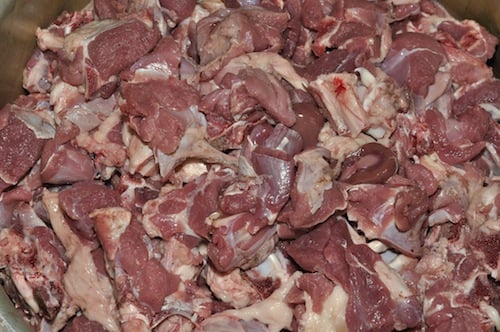
Mutton; Image via Biswarup Ganguly
Religion & Culture In Modern Indian Cuisine
Modern India is one of the most diverse countries in the world, with 28 states and around 18 major languages with 1,600 minor languages.
Indian meals and dishes have always been strongly influenced by religion and culture, and is divided into four basic styles complementing the indigenous regions:
-
- North Indian- Kashmiri, Mughlai, Banarasi and Punjabi
- East Indian- Bengali, Assamese and Nepali
- South Indian- Kannada, Tamil and Telegu
- West Indian- Gujarati and Marathi
The evolution of Indian meals has been influenced by the Portuguese, British and Persian cultures.
Moreover, unlike many other cultures, most Indian food doesn’t involve the use of solid meat. Hindus do not consume beef, and Muslims consider pork unholy; however, consumption of mutton is prominent.
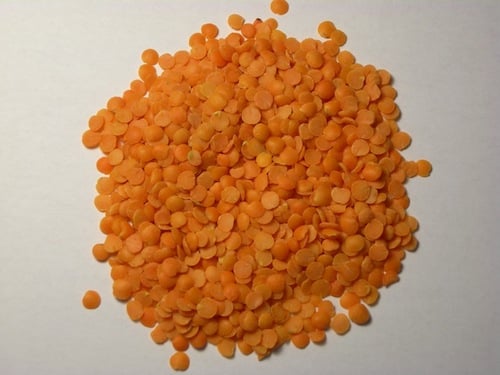
Masoor Dal; Image via Rydia
A Deeper Look Into North Indian Cuisine
North Indian cuisine belongs to the Indian states of Punjab, Uttar Pradesh, and Kashmir, and differs vastly from other Indian regional foods.
In northern India, the food is prominently influenced by Hinduism and Jainism, so most people follow a vegetarian lifestyle.
Though Hindus are mostly vegetarian, the Mughal reign in the sixteenth and seventeenth centuries changed Indian cuisine drastically with many dishes.
Wheat is a common staple used in north India, featured in roti, paratha, and naans which all are forms of wheat-based bread. Dals (lentils) are the main accessory, mainly being moong (green dal), urad (black dal), masoor (red dal) and arhar (yellow dal).
Apart from their high nutritional values, these dals bring excellent texture and taste to the meal when cooked with spices.
Additionally, India has always been known for its spicy food. Some of the most popular spices include:
-
- Cumin Seeds- Adds a refined complex flavor
- Coriander Seeds- Adds aroma and sweetness
- Bay Leaf or Tejpatta- Adds a sweet aroma and complexity
- Turmeric- Adds a pungent taste and bright colors
- Mustard Seeds- Adds a sharp smell
- Cloves- Creates warmth and numbness
- Cardamom- Adds sweetness and freshness
- Nutmeg- Adds perfume used in sweets
- Cinnamon- Adds a woody, sweet flavor
The spices used in cuisine usually have medicinal uses, as well.
For example, turmeric is used to cure fever, cardamom helps with digestive issues and tonic, and bay leaf are used to treat strains.
Apart from these spices, onion, ginger, and garlic are almost always used as meal enhancers.
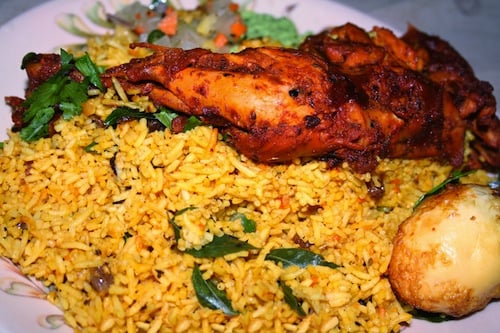
Biryani Chicken; Image via Shehal Joseph
Most Popular Dishes Of Northern India
The most famous and exotic meals of north Indian cuisine, poultry dishes, are the result of the Mughal Empire.
Despite popular belief, these aren’t considered a taboo in Indian society.
Biryani is rice-based food full of spices and meat, eggs, and vegetables. Originally, it was only prepared for parties and festivals, as it was easy to cook and serve.
Additionally, Tandoori chicken presents the Indian version of grilled chicken, but with a twist. It is a Mughal dish cooked in a tandoor (clay oven) and dipped in aromatic spices.
Punjabi’s had their own way to compete with Mughals, and Butter Chicken is proof.
Known as the “pride of Punjab,” marinated chicken is cooked in a rich gravy of butter, dried fruits, and spices, giving it an exotic taste.
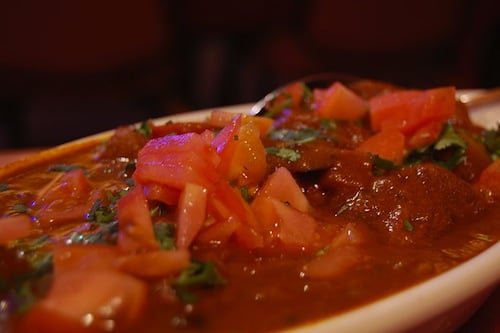
Rogan Josh; Image via stu_spivack
Furthermore, Malai Kofta is one of the most popular dishes among vegetarians, where meatball-like kofta are made of a fresh cheese called paneer and vegetables and then dipped in a rich cream sauce.
It represents a mixture of Mughlai and Aryan culture. Rogan Josh is a very complex and rich dish known for its high nutritional value.
It is lamb curry cooked with many spices and dried fruits to energize the body and withstand illness.
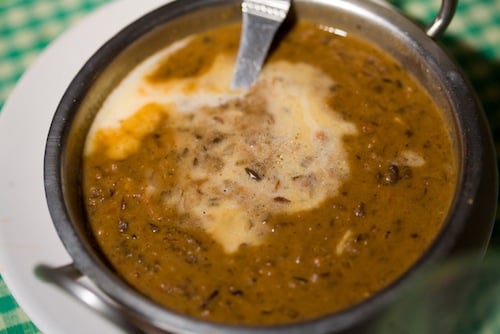
Dal Makhani; Image via Charles Haynes
Dal Makhani takes Punjabi culture to new heights, with dal (lentils) cooked with dollops of cream and butter, giving it a rich and mouth-watering taste.
The common food of rural Punjab consists of makke di roti and saron da saag, meaning rotis made of corn and served with spinach curry.
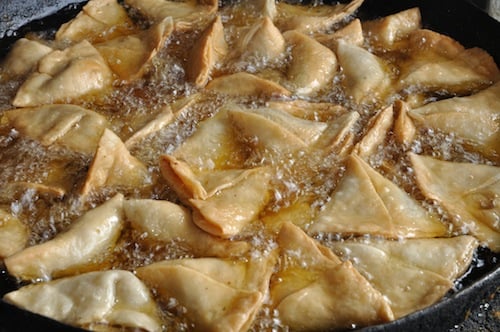
Samosas Frying; Image via Biswarup Ganguly
Fast Food In India
Indian fast foods are well known for their deep-fried, tangy taste.
Indian streets immerse walkers in mouth-watering aromas that are difficult to ignore. Kebabs have been the king of Indian snacks, served in all Indian and Persian restaurants.
These are grilled, skewered and threaded meat with tomatoes, onions, and mushrooms. Samosas are definitely worthy of praise, as these are triangular pastries filled with vegetables, spices, and herbs are served with chutney, a paste of mint and coriander.
Chicken and paneer tikka is the dish comprised of boneless chicken pieces and paneer marinated in dahi (yogurt).
Served with chutney and sauce, these tender bits reflect the true nature of Indian food and culture.
Historical Fact: Most of these foods were popularized and diversified during British raj, or rule, in India between the eighteenth and twentieth centuries.
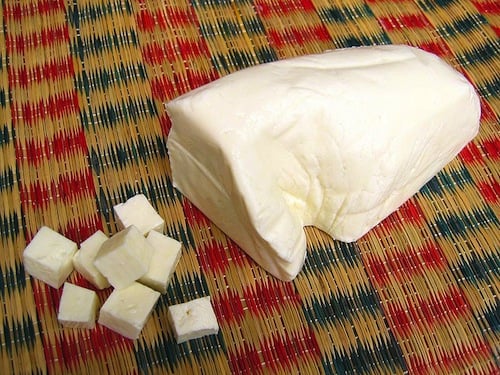
Paneer; Image via Sonja Pauen
The Importance Of Dairy
Almost 70% of north Indians are vegetarian, and since Hindus consider cows to be their mother, dairy products are valuable.
The reason behind this thought is your mother gives you milk when you’re a baby, and cows give you milk for the rest of your life.
Ghee, a sacred form of clarified butter, yogurt and paneer make up a good part of the Indian diet.
These are used to give gravies a rich texture and to make desserts.
Furthermore, cardamom-spiced milk is commonly taken for a sound and comfortable sleep. In Hindu rituals, dairy products are often used to represent purity and simplicity.
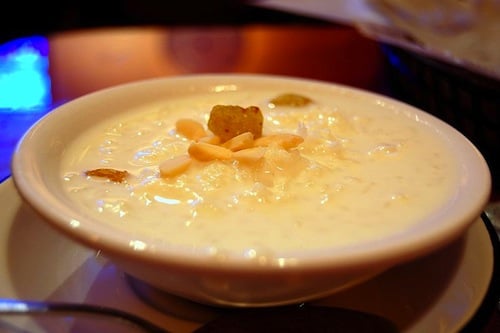
Kheer; Image via stu_spivack
North Indian cuisine would not be complete without sweets, or mithais, and delicious desserts.
These mithais greatly emphasize the use of dairy products. Kheer, also known as payasum, is the Indian version of sweet rice pudding with raisins and cashews.
The dessert is common to eat in everyday life, but also marks significant life events such as birth, marriage and death.
Halwa is a sweet dish made of semolina, milk and sugar. Often used in rituals, it is served to devotees.
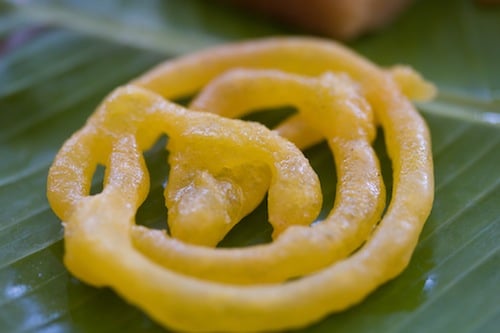
Jalebi; Image via Charles Haynes
Punjab has been significant in forming the base of north Indian cuisine, and rabri is a prime example.
It is made of sweet condensed milk filled with spices like saffron and nuts, cooked until dark and served chilled.
Jalebi is a dish made of dough that is fried in vegetable oil and dipped in sugar syrup.
Its coiled shape makes it very popular with children, and modified versions of traditional jalebis are becoming popular in urban India.
Gulab jamun has ruled Indian hearts since the beginning, and consist of sweet milk balls dipped in hot sugar syrup.
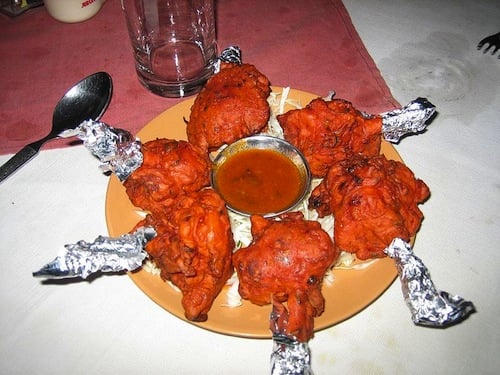
Chicken Lollipop; Image via Goa!
Modern northern India has been evolving rapidly and becoming very cosmopolitan, with the food being influenced by other cultures.
Chinese immigrants have added vibrant colors to already bright dishes like Chicken Lollipop, deep-fried chicken made from the middle segments of the wings and held like a lollipop.
Moreover, chicken noodles and chili chicken are common in the streets of New Delhi, ready to compete with traditional tikkas and tandoors.
Malaysian and Singaporean influences are also shaping Indian fast food.
North Indian food has evolved from the days of the Aryans, Mughals, and British rule.
These aromatic and exotic dishes are now served across the globe.
Furthermore, Indian cuisine has played an important role in projecting Indian culture and bridging the gap between this conservative country and the world.
Have you ever tried the food of northern India?
This post was written by Jessie on a Journey’s local India writer, Sushant Garg.
Bonus North India Travel Resources:
Traveling Northern India: 12 Things To Do Beyond The Temples & Taj Mahal
The Secret To Finding Peace In India Can Be Found In Bundi
How To Get High (Legally) In Varanasi, India
India’s Unique Karni Mata Temple Is Devoted To Worshipping Rats
10 Unforgettable Things To Do In Delhi, India
Solo Trip From Delhi: 10 Amazing Places To Visit Near Delhi Alone

Hi, I’m Jessie on a journey!
I'm a conscious solo traveler on a mission to take you beyond the guidebook to inspire you to live your best life through travel. Come join me!

Want to live your best life through travel?
Subscribe for FREE access to my library of fun blogging worksheets and learn how to get paid to travel more!

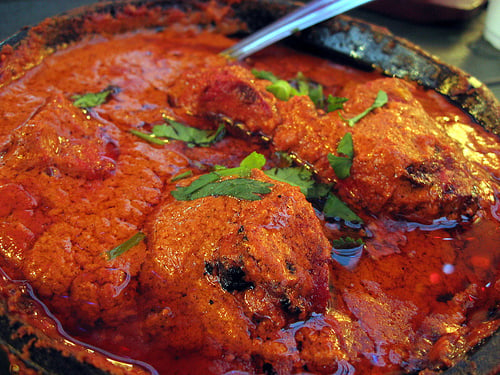

Good Stuff with detailed information . worked on facts too .
Hi Jessie,
Nice article, but please state correct facts. There was no usage of Tandoor (Clay Oven ) in Mughlai cuisine. Tandoor belongs to Punjab region and its was introduced to rest of India by Punjabi refugees who were settled in Delhi after Partition of India(Punjab). Tandoori Chicken and butter chicken are part of Punjabi cuisine and not Mughlai cuisine.
Good information your site nice fact note in site .
Thanks for elaborating culture of India through food.
Amazing insights into the culture of India through food.
Oh gosh. Indian food always make me feel better now than before i am, ❤️
This article gives the light in which we can observe the reality.Completely shocked by the results of this site!
Grate You Legends
nice
The way you intertwine personal experiences with the local culinary scene adds a unique touch. It’s not just about the recipes; it’s about the people, the traditions, and the heartwarming connections made through shared meals.
I’m particularly drawn to your immersive approach to understanding the cultural context behind each dish. It’s more than a food journey; it’s an invitation to embrace the soulful spirit of Northern India.
yes this website article help me to know about indian culture and food